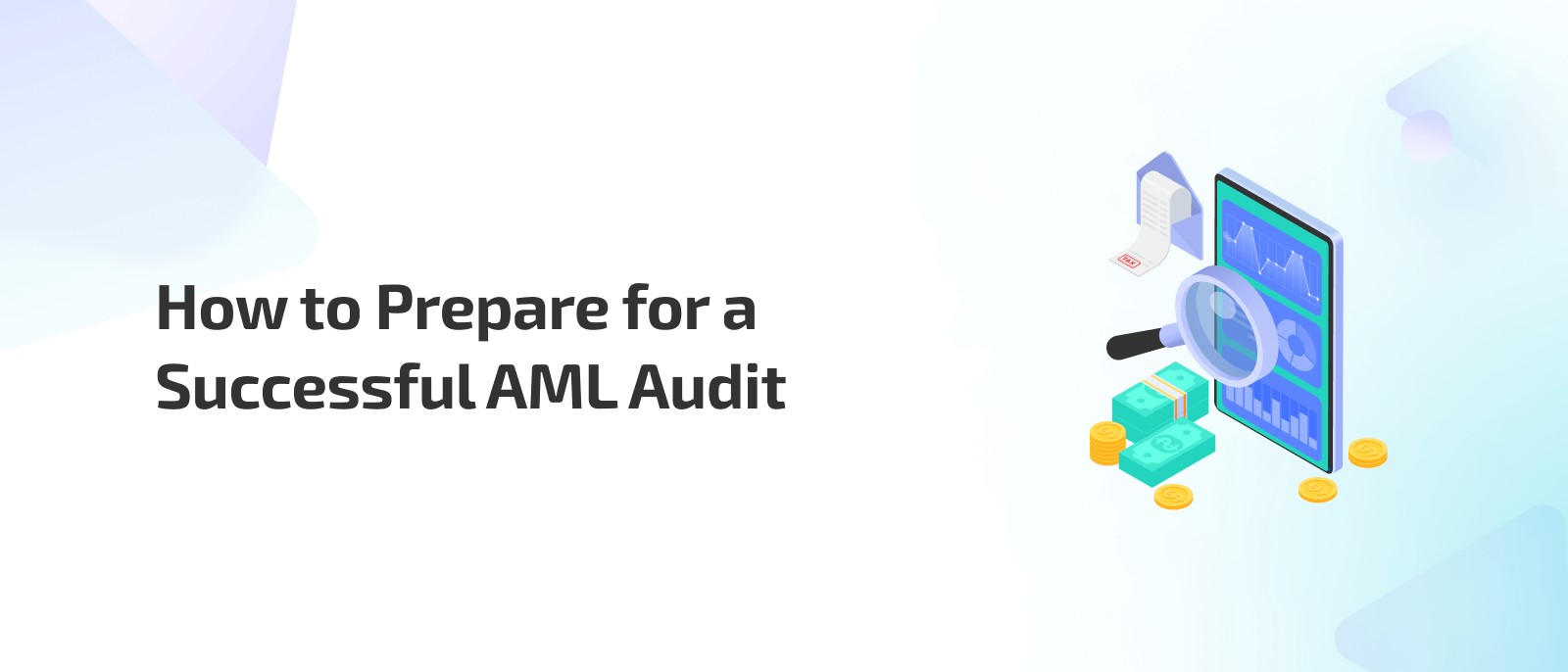.webp)
Published on
March 18, 2025
AI Fraud Detection: Benefits, Risks, and Types of Fraud It Detects
In this story

Accelerate AML Compliance: Meet Regulatory Demands with 80% Less Setup Time
.svg)
.svg)
AI is one of the most powerful tools to fight fraud. In this discussion, we'll explore how AI can help you protect your organization and your customers from different types of fraud.
What makes AI particularly effective is its ability to "learn" from every transaction, meaning; that the more data the AI processes, the better it gets at spotting fraud! It is a technology that becomes more reliable and effective as time goes on.
What is AI Fraud Detection?
Fraud detection AI picks up on patterns over time, so instead of relying on set rules, it adapts as it processes more data, getting better at spotting anything off.
Fraud detection AI uses tools like machine learning to track transactions, flagging any that seem out of place, whether that’s an odd spending pattern or logins from unexpected places. As it gathers more data, it refines its ability to separate normal activity from fraud, even catching new tricks fraudsters might try.
So the main difference between traditional fraud detection systems and AI fraud detection solutions (machine learning and natural language processing) is that the first relies on fixed rules whereas the latter is dynamic.
How Does Artificial Intelligence for Fraud Detection Work?
AI, in general, is great at spotting patterns and learning over time and this is especially true for AI fraud detection solutions.
1. Data Collection
The first step is gathering data, large amounts of information (this can be a. User behaviors b. Device data c. Location d. Transaction History), because this allows the AI fraud detection system to understand what “normal” behavior looks like for each user.
2. Identifying Unusual Patterns (Anomaly Detection)
Once the AI detection system knows what normal activity looks like, it starts looking for anything unusual. For example, if a user who typically makes small local purchases suddenly makes a large international transfer, AI and fraud detection will flag that as suspicious.
3. Behavioral Analysis
Artificial intelligence for fraud detection keeps track of things like when a user logs in, how much they spend, and their usual buying patterns so if something seems off, like they suddenly log in at a weird time or from a new unusual place, the system will raise a flag and let you know something’s up.
4. Risk Scoring
Every transaction gets a risk score based on the user’s history, how fast the transaction is happening, and where it’s happening from. If the score’s too high, it might get flagged for review or blocked automatically.
5. Continuous Learning
As AI gets more data, it gets better at spotting fraud and can adapt to new tricks fraudsters try.
6. Alerting and Action
If AI sees something suspicious, it can either alert someone to look into it or just block the transaction right away. This helps stop fraud in the moment.
7. Improving Accuracy
As AI processes more data, it gets better at not flagging real transactions as fraud, reducing the rate of false positives.
Comply quickly with local/global regulations with 80% less setup time
.svg)
.svg)
The Benefits of AI Fraud Detection and Prevention
AI is a smarter, faster, and more efficient way for financial institutions to protect their bottom line.
1. Instant Detection, No Waiting Around
When it comes to fraud, time is money. AI has the uncanny ability to detect suspicious activities instantly. The moment a transaction looks off, the system flags it, preventing potential losses before they can even hit the books.
2. Designed for Growth, No Slowdown
As transaction volumes surge, AI and fraud detection thrive. Unlike traditional methods that might buckle under pressure, AI scales effortlessly. It processes millions of transactions without missing a beat, handling growing volumes with the same precision as when the system was first set up. It’s like having an army of analysts working around the clock, without the manpower issues.
3. Cutting Costs Without Cutting Corners
Sure, AI needs an initial investment, but the savings that come down the road are nothing short of impressive. By automating fraud detection using AI processes, institutions can trim their overhead costs and reallocate resources more effectively. Plus, AI’s speed means fewer fraudulent transactions slip through the cracks, saving even more in the long run.
4. Precision Like Never Before
AI doesn't just flag anything that looks slightly off; it’s hyper-focused. Unlike outdated rule-based systems that rely on broad patterns, fraud detection using AI dives into the details, constantly analyzing vast amounts of data to pick up even the subtlest fraud signals. And it gets better with every transaction, learning and adapting to new threats as they emerge.
5. Less Noise, More Results
One of the biggest frustrations with fraud detection? False positives. AI for fraud detection minimizes those annoying hiccups by learning from each case. Over time, it refines its processes, accurately distinguishing between legitimate transactions and fraudulent ones. The result of AI for fraud detection? Fewer inconveniences for real customers, and more actionable fraud alerts when they matter most.
6. Building a Fortress of Trust
Customers are hyper-aware of fraud risks. With AI, your institution becomes a fortress, continuously monitoring for threats and instantly responding. This gives your clients peace of mind, knowing their transactions are safe. That trust translates into loyalty and strengthens your brand’s reputation in a competitive market.
7. AI Never Stops Improving
What’s one of AI’s best tricks? It’s self-improving. Every new data set, every detected anomaly, helps the system fine-tune its skills. This means that even as fraud tactics evolve, AI stays ahead of the curve. Unlike static systems that require constant updates, AI learns on the fly, becoming more accurate as it processes more information.
AI in Fraud Prevention: 5 Key Use Cases
AI isn’t just a buzzword, it’s a vigilant, sophisticated tool when it comes to identifying fraud in the financial world. It is quickly becoming a formidable ally in the fight against fraud, with its ability to sniff out suspicious activity across a wide spectrum of financial scenarios.
- Credit Card Fraud: AI in fraud prevention analyzes transaction data with a microscopic lens. It watches for out-of-character spending, like an unusual spree or a transaction that pops up in an unfamiliar place, and flags these red flags, potentially halting fraudulent transactions before they ever get off the ground.
- Identity Theft: Here, AI isn’t just tracking numbers, it’s tracking behavior. It monitors account access patterns and can instantly spot when something doesn’t add up. A login from an odd location or a new device trying to break in? AI will catch that mismatch and raise the alarm.
- Account Takeover: Account hijackers rely on shifts in typical usage patterns to gain access. AI keeps a keen eye on new device logins or sudden changes in transaction habits. It can quickly sense when something’s off and stop the fraudsters in their tracks before they cause damage.
- Money Laundering: Money laundering is a game of smoke and mirrors, but AI is ready to expose it. By monitoring financial flows, AI can detect large or complicated transfers that span borders, tracing unusual activity and ensuring that funds don’t make it through undetected.
- Synthetic Identity Fraud: Synthetic identities are a mix of real and fabricated details, making them harder to spot. But AI doesn’t just look at surface-level data. It digs deeper, looking for inconsistencies or odd patterns in behavior that might indicate something’s not right. It’s able to pinpoint these fraudulent identities with surprising accuracy.
Risks and Challenges of Using AI in Fraud Detection
When financial institutions decide to bring AI into the fold for fraud detection, it sounds great on paper, but there are some bumps in the road they’ll need to navigate.
1. Protecting Sensitive Data
AI in fraud detection thrives on data (lots of it!), but that data often includes sensitive financial and personal information, which is a big red flag if not handled properly. Institutions have to be extra cautious about keeping this data under lock and key (and to avoid breaches!)
2. AI Can Be Unintentionally Biased
If the data (AI is learning from) is flawed, AI could pick up on patterns that lead to unintentional bias. Imagine an AI that unfairly flags a certain group of people more often, just because the data it learned from had biases in it.
3. Fraudsters Evolving with AI
Fraud isn't static, neither is AI. The catch is, fraudsters are using AI themselves to bypass detection. It’s a constant back-and-forth game, where financial institutions need to keep evolving their systems to outsmart the fraudsters before they get a foothold.
4. The “Black Box” Problem
AI can be a little bit of a mystery sometimes, especially the deep-learning types. It’s not always easy to explain why a system flagged something as fraud. This opacity can make things tricky when you need to answer to regulators, or when customers want clear answers on why a transaction was blocked.
Stop Fraud with FOCAL AI Fraud Prevention Solution
The integration of AI-based solutions like FOCAL’s Fraud Prevention System offers a multi-layered approach that combines advanced machine learning models with real-time data analysis and a customizable fraud detection strategy.
FOCAL uses advanced device fingerprinting and behavioral analysis, FOCAL identifies non-transactional fraud by spotting abnormal user behavior, blocking high-risk connections like VPNs and hosting services, and reducing overall threats.
If you’re looking for an AI in fraud prevention solution, feel free to schedule a one-on-one demo to see how FOCAL can enable and empower your organization.
AI Fraud Detection FAQs
Q1. Is fraud detection with machine learning expensive?
Machine learning and fraud detection might seem costly at first, but it saves money in the long run. AI prevents fraud, reduces manual work, and keeps getting better over time, making machine learning and fraud detection a smart investment.
Q2. Can AI detect fraud in real time?
Yes! AI works instantly, scanning transactions in milliseconds to catch anything suspicious before it causes damage.
Q3. What types of fraud can AI detect?
AI can spot credit card fraud, identity theft, account takeovers, suspicious login attempts, and more!
Q4. Does AI reduce false positives?
Absolutely. Unlike old fraud systems that flag too many real transactions as fraud, AI learns and improves. It can tell the difference between a real customer and a real threat.
Q5. How does AI differentiate between a real customer and a fraudster?
AI tracks spending habits, location, device details, and typing speed. If something seems off, like a sudden change in behavior, it steps in to stop fraudsters.
Streamline Compliance: Achieve 80% Faster Setup for Fraud Prevention
.svg)
.svg)

How Aseel reduced onboarding time by more than 87% using FOCAL
Learn how FOCAL empowered Aseel to achieve new milestones.
.svg)
.svg)
Mastering Fraud Prevention: A Comprehensive Guide for KSA and MENA Businesses
51% of organizations fell victim to fraud in the last two years, don't be caught off guard, act proactively.
.svg)
.svg)
Featured blog posts
.svg)





AI-Driven Precision in Fraud Risk and AML Compliance
.svg)
.svg)

.svg)
.png)






.webp)




.svg)








%20(1).webp)
Comments
Leave a Reply
Comment policy: We love comments and appreciate the time that readers spend to share ideas and give feedback. However, all comments are manually moderated and those deemed to be spam or solely promotional will be deleted.